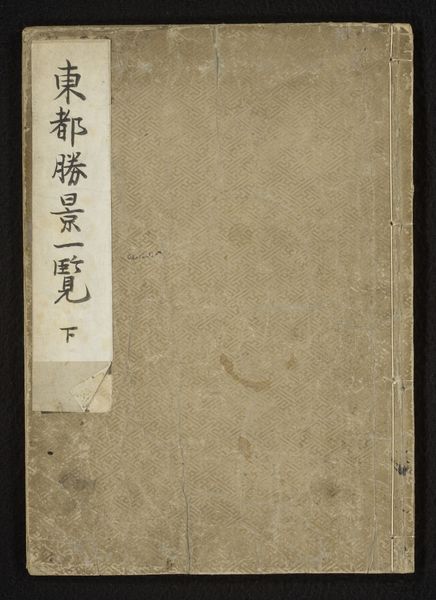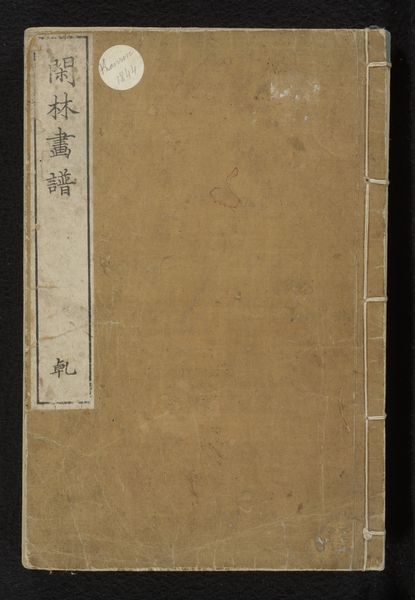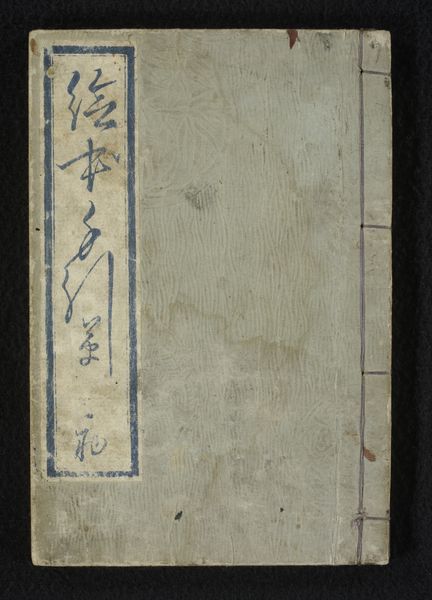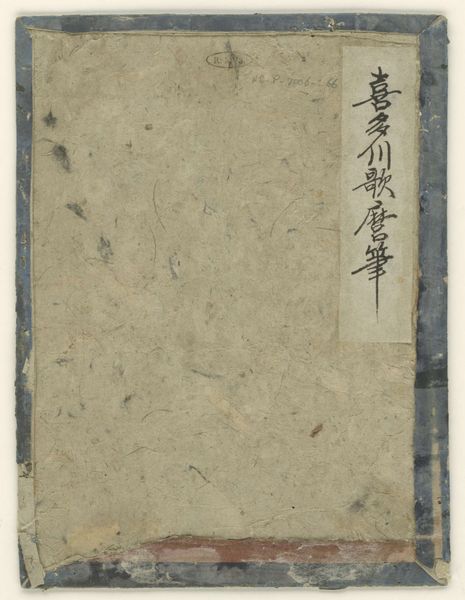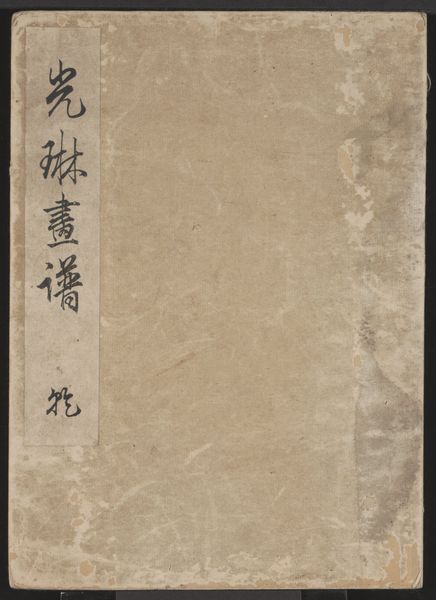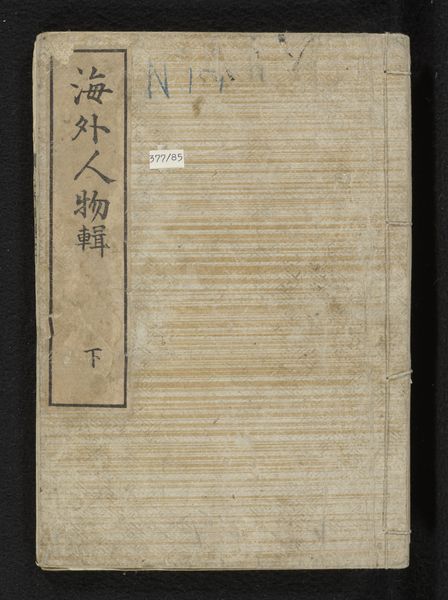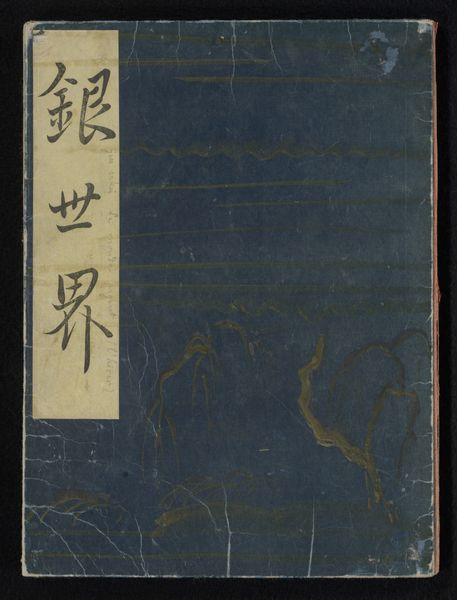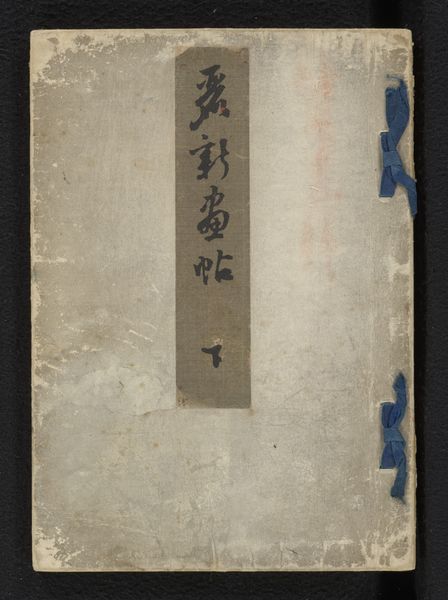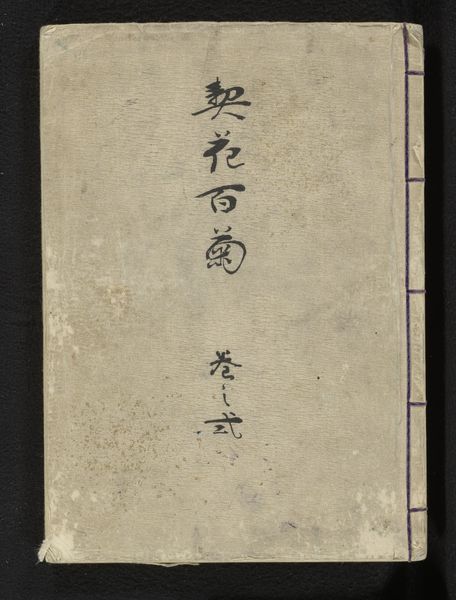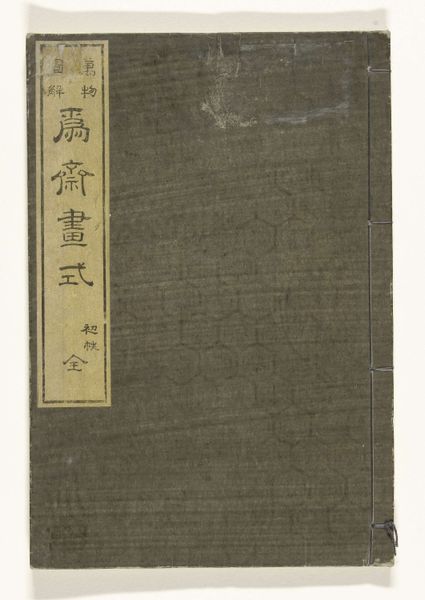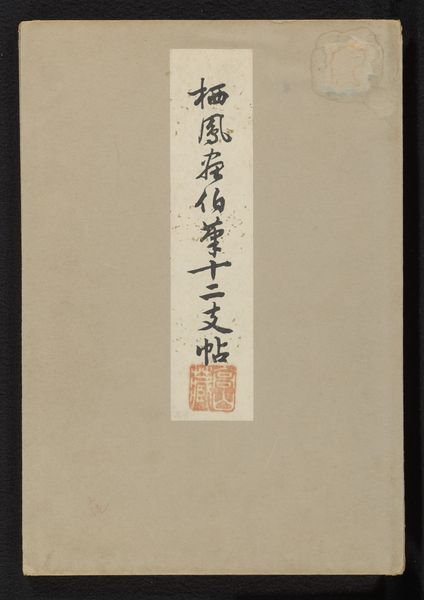
drawing, paper
#
drawing
#
aged paper
#
homemade paper
#
paper non-digital material
#
paperlike
#
asian-art
#
sketch book
#
paper texture
#
paper
#
personal sketchbook
#
folded paper
#
paper medium
#
sketchbook art
Dimensions: height 225 mm, width 157 mm
Copyright: Rijks Museum: Open Domain
Editor: This is "Bloemen van voorspoed" or "Flowers of Prosperity" by Kitao Shigemasa, made around 1771 or 1772. It's a drawing on paper, and it appears to be a sketchbook. The cover itself looks really aged and almost fragile. What strikes me is how much history seems to be embedded in this one object. How do you interpret this work in light of its historical context? Curator: Absolutely. The very materiality of the paper, its evident age and fragility, speaks volumes. It invites us to consider the social and cultural functions of printed material in 18th-century Japan. Think about it: this isn’t just an aesthetic object; it’s a record of knowledge, a repository of cultural values, potentially even a subversive act. Editor: Subversive? How so? Curator: Consider the strict social hierarchies of the Edo period. The ability to read, to access and create written or visual material, could be a form of empowerment, a quiet resistance to imposed norms. Was this a commercially produced item, or an individually made artist's notebook? The answer influences who it served, and what impact it might have had. Does it promote or critique the social norms of its time? Also, "prosperity" for whom? And at whose expense? We need to look at the wider social implications of seemingly simple things like flowers. Editor: I never would have thought about it like that. I was just focused on the age of the paper and the faint floral design. Curator: Precisely. And that's the point! It's vital to look beyond the surface. Consider how such objects challenged or reinforced existing power structures. That tension, that dialogue, is what makes it resonate even today. Editor: I see, it's more than just appreciating the artistry, but understanding the layers of social meaning embedded within the work. It definitely gives me a new perspective on art history. Curator: Indeed. It's about recognizing the voices – and the silences – within the historical record.
Comments
No comments
Be the first to comment and join the conversation on the ultimate creative platform.
